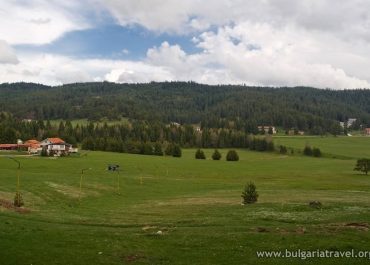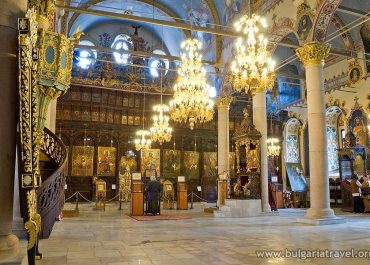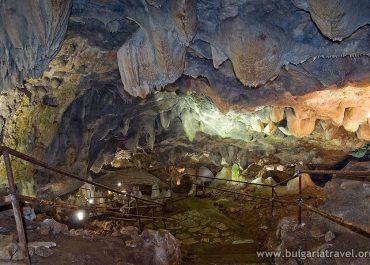
Tsepina Fortress
The Tsepina Fortress is situated a few kilometers north-west of the Rhodope village of Dorkovo. The fortress is one of the most often visited historical landmarks in this section of the Rhodope mountain. It is situated on a cone-shaped hill, 1,136 meters above the sea level.
Remains of a Thracian sanctuary, the foundations of several churches, water storages, a basilica, residential buildings, and a necropolis were found here during archaeological research. In its present look, the fortress was built between the 11th and the 13th century. The fortress was researched in 1979 and a unique marble relief of the apostles Peter and Paul was found. Presently, the valuable artifact is preserved in the Hermitage in Sankt Petersburg.
According to historical sources, this area was a residence of Despot Alexius Slav, a nephew of Tsar Kaloyan (reigned 1197 – 1207). He was a ruler of the Rhodope area in the 13th century, and during his time the mountain was called Slavievi Gori. A legend says that the Despot married Isabel, the daughter of the Latin Emperor Henrich. After the wedding, Alexius Slav took his wife in the fortress, and when she saw the high peaks and the dark forests, the exclaimed in French: “Oh, my God, my grave will probably be here!”. The mother of Slav, Tamara, did not understand the words of her daughter-in-law, but she decided that this was a blessing and exclaimed in response: “Amen, let be it!”. Soon after that the young woman got sick and died. She asked to be buried on the nearby peak, so that in the morning when the sun rises, her grave would be lit up. Soon after that Alexius Slav moved its residence in Melnik.
The Tsepina Hut is situated close to the fortress.
From the village of Dorkovo drive in the north direction along an asphalt road. If you go on foot, it will take you about an hour and a half. The way from the hut to the fortress is only a few minutes.
Tourist information center – Batak
5, Osvobozhdenie Square., town of Batak
Tel: +359 3553 226220
E-mail: bat_tourist@abv.bg
Website: http://www.batak.bg
The Tsepina Fortress is situated a few kilometers north-west of the Rhodope village of Dorkovo. The fortress is one of the most often visited historical landmarks in this section of the Rhodope mountain. It is situated on a cone-shaped hill, 1,136 meters above the sea level.
Remains of a Thracian sanctuary, the foundations of several churches, water storages, a basilica, residential buildings, and a necropolis were found here during archaeological research. In its present look, the fortress was built between the 11th and the 13th century. The fortress was researched in 1979 and a unique marble relief of the apostles Peter and Paul was found. Presently, the valuable artifact is preserved in the Hermitage in Sankt Petersburg.
According to historical sources, this area was a residence of Despot Alexius Slav, a nephew of Tsar Kaloyan (reigned 1197 – 1207). He was a ruler of the Rhodope area in the 13th century, and during his time the mountain was called Slavievi Gori. A legend says that the Despot married Isabel, the daughter of the Latin Emperor Henrich. After the wedding, Alexius Slav took his wife in the fortress, and when she saw the high peaks and the dark forests, the exclaimed in French: “Oh, my God, my grave will probably be here!”. The mother of Slav, Tamara, did not understand the words of her daughter-in-law, but she decided that this was a blessing and exclaimed in response: “Amen, let be it!”. Soon after that the young woman got sick and died. She asked to be buried on the nearby peak, so that in the morning when the sun rises, her grave would be lit up. Soon after that Alexius Slav moved its residence in Melnik.
The Tsepina Hut is situated close to the fortress.
From the village of Dorkovo drive in the north direction along an asphalt road. If you go on foot, it will take you about an hour and a half. The way from the hut to the fortress is only a few minutes.
Tourist information center – Batak
5, Osvobozhdenie Square., town of Batak
Tel: +359 3553 226220
E-mail: bat_tourist@abv.bg
Website: http://www.batak.bg
Virtual map
Photos
© All images, advertising and video materials and/or other information published on this website are property of the Ministry of Tourism and are protected by the Law on Copyright and Related Rights, according to the Bulgarian laws to all applicable international and relevant acts of the European Union.





